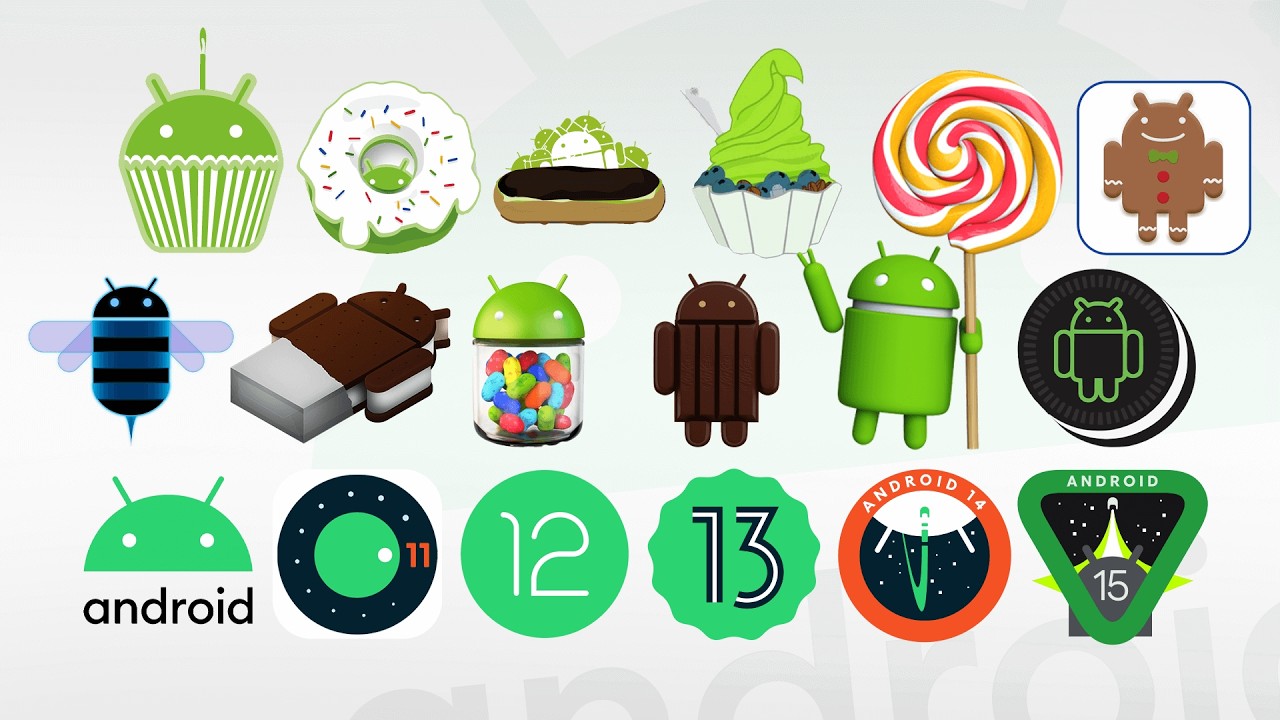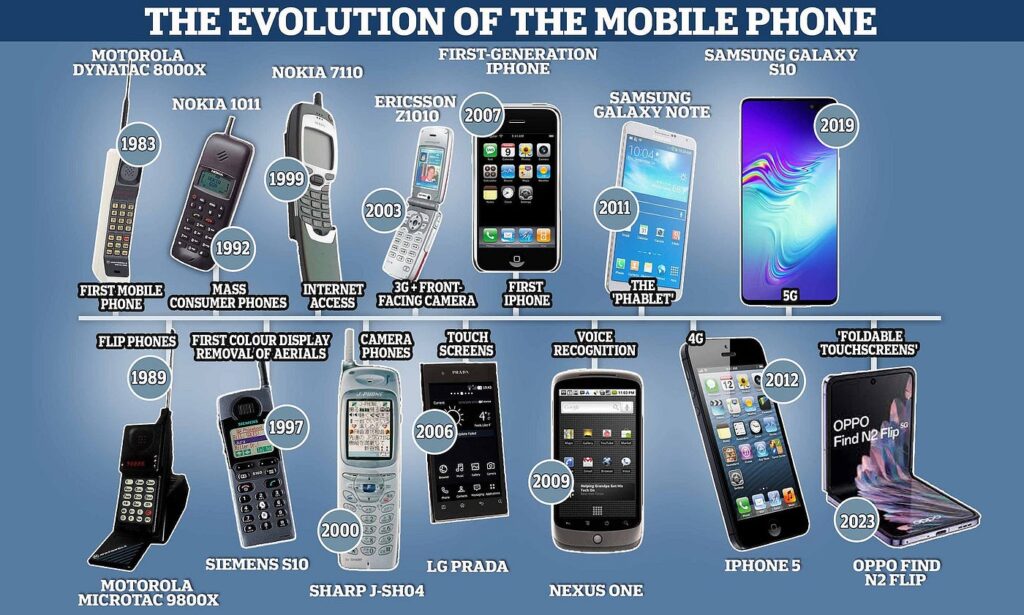Android has come a long way since its initial release in 2008. From humble beginnings as a Linux-based open-source mobile OS, Android has evolved into a powerful ecosystem powering billions of devices around the world. In this article, we’ll explore the history of Android, tracing each major version from Cupcake to the current Android 15, highlighting key features and how the platform has transformed over the years.

1. Android 1.5 Cupcake (April 2009)
Cupcake was the first version of Android to receive a dessert-themed name. It introduced:
-
On-screen keyboard
-
Widgets on the home screen
-
Video recording and playback
-
Bluetooth stereo support
Cupcake laid the groundwork for future user interface developments.
2. Android 1.6 Donut (September 2009)
Donut added key functionalities, including:
-
Support for CDMA networks
-
Battery usage indicator
-
Voice and text search integration
This version helped Android expand beyond GSM-based phones.
3. Android 2.0 – 2.1 Eclair (October 2009)
Eclair focused on user interface refinements and introduced:
-
Google Maps Navigation
-
Improved camera UI
-
Live wallpapers
-
Multiple account support
4. Android 2.2 Froyo (May 2010)
Froyo (short for Frozen Yogurt) brought performance and speed:
-
USB tethering and Wi-Fi hotspot
-
Flash support in the browser
-
App installation on SD card
5. Android 2.3 Gingerbread (December 2010)
Gingerbread improved gaming and interface design:
-
Refreshed UI with dark theme
-
Better copy-paste functionality
-
NFC support (first introduced in Nexus S)
6. Android 3.0 Honeycomb (February 2011)
Honeycomb was designed exclusively for tablets:
-
Holographic UI
-
Action Bar introduced
-
Multitasking improved
7. Android 4.0 Ice Cream Sandwich (October 2011)
ICS unified phone and tablet UI, introducing:
-
Holo design language
-
Face unlock
-
Data usage tracking
-
Swipe-to-dismiss notifications
8. Android 4.1 – 4.3 Jelly Bean (2012 – 2013)
A major leap in performance and smoothness:
-
“Project Butter” for better UI responsiveness
-
Google Now introduced
-
Expandable notifications
-
Multi-user support on tablets
9. Android 4.4 KitKat (October 2013)
KitKat focused on performance for lower-end devices:
-
“OK Google” voice command
-
Full-screen apps
-
Immersive mode
-
NFC payment support
10. Android 5.0 – 5.1 Lollipop (2014 – 2015)
Lollipop brought a major visual overhaul:
-
Material Design
-
Enhanced notifications and lock screen
-
ART runtime replacing Dalvik
-
Better battery management with Project Volta
11. Android 6.0 Marshmallow (October 2015)
This release improved security and permissions:
-
App permissions manager
-
Doze mode for battery optimization
-
Fingerprint API
-
Adoptable storage
12. Android 7.0 – 7.1 Nougat (2016)
Focused on multitasking and performance:
-
Split-screen mode
-
Quick settings customization
-
Vulkan API for 3D graphics
-
Seamless updates
13. Android 8.0 – 8.1 Oreo (2017)
Oreo brought under-the-hood enhancements:
-
Picture-in-picture mode
-
Notification dots and channels
-
Autofill API
-
Improved boot speed and background limits
14. Android 9 Pie (August 2018)
Pie emphasized digital wellbeing:
-
Adaptive battery and brightness
-
App actions and slices
-
Navigation gestures
-
Dashboard for screen time tracking
15. Android 10 (September 2019)
Google dropped dessert names publicly, focusing on features:
-
Dark theme system-wide
-
Smart reply across all messaging apps
-
Enhanced privacy and location controls
-
Focus Mode for digital wellbeing
16. Android 11 (September 2020)
Improved messaging and device control:
-
Chat bubbles
-
Screen recording
-
One-time permissions
-
Smart device controls in the power menu
17. Android 12 (October 2021)
A bold visual and functional redesign:
-
Material You – dynamic theming based on wallpaper
-
Privacy dashboard
-
Mic and camera indicators
-
Faster auto-rotate
18. Android 13 (August 2022)
Focused on customization and privacy:
-
Per-app language settings
-
Photo picker
-
Enhanced media controls
-
More themed icons
19. Android 14 (October 2023)
Incremental but meaningful changes:
-
Satellite connectivity support
-
Smarter battery usage
-
App cloning
-
More control over data sharing
20. Android 15 (Expected 2025)
Android 15 is expected to push further into AI-driven features, enhanced multitasking, and deeper integration with foldable and wearable devices. While details are still emerging, the focus will likely include:
-
Better foldable app continuity
-
Adaptive battery and background task optimizations
-
AI-powered smart replies and predictive actions
Conclusion
The Android operating system has matured significantly since its early days. With each version, Google continues to enhance performance, usability, privacy, and security, making Android the leading mobile platform globally. As we look forward to Android 15 and beyond, the future promises smarter, more adaptive, and user-centric mobile experiences.


